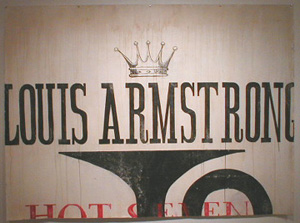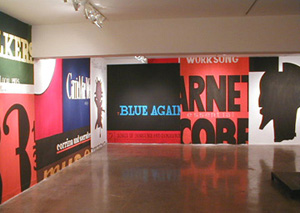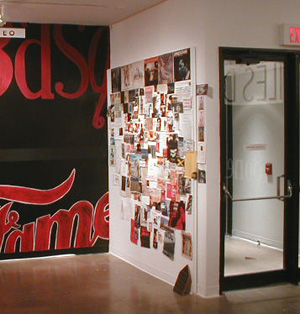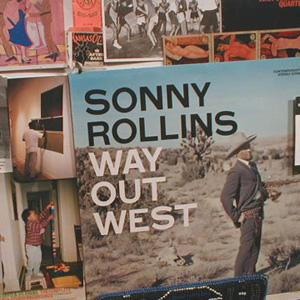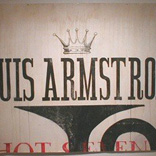The music we listen to defines our shared identities even more poignantly than the books we read. There is no more challenging question than the seemingly casual “what music do you like?”; the right answer makes two people soulmates, the wrong one makes them strangers. Tierney Malone’s My Favorite Things at U of H’s Blaffer Gallery links present day visual artists to jazz musicians of the 1940’s, implying a continuous community of creative effort.
Malone’s work is steeped in nostalgia: old records, old signs, old photographs. Every surface is stained, scuffed, and weathered. Malone’s wall paintings use thin, semi-transparent color to simulate the fading of time.
Nostalgia bugs me. Even in the good old days, everyone longed for the good old days. Nostalgia is slippery. Nothing’s easier to evoke, or more potent at blunting perception. Like mythologizing, romancing, and outright fantasy, nostalgia creates a stylized fictional reality. The trick is that by using selected bits of real history, nostalgia’s fictions have a deceptive aura of fact.
Let’s set nostalgia aside; clearly Malone isn’t trying to create an objective document of the jazz era; he’s making concrete his personal vision. That vision is generous and supportive, weaving together references to people and places both world-famous and obscure, suggesting that they’re all part of a single cultural continuum. Houston’s Bert Samples and the Reggae Hut share wall space with Carrie Mae Weems and Thelonious Monk in Malone’s tapestry of self-referential African-American-ness.
Like the “rainbows and roses and whiskers on kittens” Julie Andrews sings of in The Sound of Music, the favorite things in Malone’s paintings are everyone’s favorites: pleasant to recall, but not very enlightening. Who doesn’t like old signs and Louis Armstrong? The best part of the show, Sign Painter for Hire, is the John Coltrane version: complex, personal, and fresh. In one corner of the gallery, an untidy wall of clippings, photos, postcards, drawings and record covers piece together a complicated portrait of the artist’s mind at work. One segment places a few Modigliani nudes next to a vintage postcard of boxers at practice, next to a Sonny Rollins album cover depicting the musician dressed as a gunslinging cowboy. It’s a stream of consciousness scrapbook honestly documenting the artist’s conflicts, fantasies and interests. Sign Painter for Hire does literally what the rest of the show does second hand: juxtaposes old and new, personal and shared memories, free from the corny earnestness of Malone’s paintings.
All images are courtesy the artist and Blaffer Gallery.
Bill Davenport is an artist and writer and was one of the first contributors to Glasstire.


